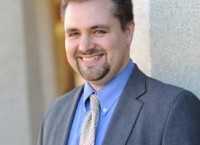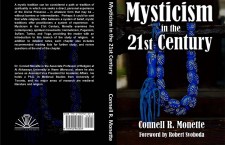Mysticism in the 21st Century
An interview with Dr. Connell R. Monette
Associate Professor of Religion in the School of Humanities and Social Sciences and Mohammed VI Library Associate Director at Al Akhawayn University in Ifrane, Morocco.
A mystic tradition can be considered a path or school of spirituality in which ones seeks a direct, personal experience of the Divine Presence, in whatever form that may be without barriers or intermediaries. Within the academic text book, Mysticism in the 21st Century, Dr. Monette examines five contemporary spiritual areas: Hermeticism, Paganism, Sufism, Tantra, and Yoga and of these five mystic paths Dr. Monette collaborates with: Shri Kapilnath, Stephen Abdullah Trevathan, Anton Long, Jall, Mark Alan Smith, Robert Svoboda, Zhander Remete, Emma Balnaves, Michael Kelly, HH Bir Krishna das Goswami, and Andrea Olivera.In my video interview with Dr. Monette, we discuss Mystism in the world, academic institutions and of those who helped infuse this mystic academic textbook.

Dr. Connell R. Monette is the Associate Professor of Religion in the School of Humanities and Social Sciences and Mohammed VI Library Associate Director at Al Akhawayn University in Ifrane, Morocco. He holds a Ph.D. in Medieval Studies from University of Toronto, and his major areas of research are medieval religion and literature. He is the author of Mysticism in the 21st Century (2013) and The Medieval Hero (2nd ed. 2012), and a past contributor to the Journal of Indo-European Studies, The International Journal of Euro-Mediterranean Studies, Comparative Islamic Studies, and Islamic Horizons. He currently lives in Ifrane with his wife Fatiha and his children Miriam and Adam.
View the full interview here: http://www.youtube.com/watch?v=C9ShmOP_6yM
A short interview with Dr. Monette:
Is there really still ‘Mysticsm in in the 21st Century’?
Yes absolutely, in fact now Mysticism is more widespread than ever. If we consider Mysticism in very broad terms, there are millions of people today practicing a path or tradition of mysticism. Further, today we have people able to access very traditional forms of mysticism that were formerly reserved only for members of certain ethnic or religious communities (like Kabbalah, Sufism and Yoga). Mysticism also appeals to people who are spiritually inclined, but feel disinclined to associate with mainstream religion for obvious reasons.
This is exciting! Hermeticism, Paganism, Sufism, Tantra, and Yoga all within the academic curriculim at a Al Akhawayn University of Ifrane, in Morocco, have the schalars realized something they aren’t telling us? Is this a growing trend?
Given its location in Africa and its proximity to Europe and America (as well as the Middle East), Morocco has always been a place of diversity, in terms of religion, culture, language and ethnicity. While Morocco is certainly a majority Muslim country and has always been a center of Islamic education and culture, likewise small communities practicing Judaism, Christianity, and West African spiritual traditions have made their home here. Educated citizens today need to be aware of the spiritual and cultural traditions of other people and nations, and so Al Akhawayn University offers courses in Comparative Religion, as well as Mysticism and Sufism, to better inform its undergraduate and graduate students about the global community of which they are part.
You’ve combined the academic research of some very impressive devotees within their paths, can you name set the theme for each one in which they practice and why you chose them?
Initially I wrote to over thirty potential consultants across seven spiritual traditions, who were  recommended to me by senior colleagues in Canada and the USA. Over the period of several months, I realized that seven chapters was too many, and so the book was shortened to the five chapters included now. The consultants who are featured are those who were willing and able to correspond, as well as to represent their particular tradition with a certain level of credibility and authority, and who saw the value in participating in such a textbook. I am very, very lucky to have worked with such excellent people.
recommended to me by senior colleagues in Canada and the USA. Over the period of several months, I realized that seven chapters was too many, and so the book was shortened to the five chapters included now. The consultants who are featured are those who were willing and able to correspond, as well as to represent their particular tradition with a certain level of credibility and authority, and who saw the value in participating in such a textbook. I am very, very lucky to have worked with such excellent people.
Any talk about expanding your research into additional courses at the University?
I am considering a similar study which would focus on those amazing and diverse spiritual traditions native to Morocco. Examples of these include different paths of Sufism — Moroccan has several, like the Boutchichi, the Tijani, the Darkaoui, the Shadhili, etc. — as well as the Gnawa and Hamadcha traditions. But that would be a project in which I’d need to collaborate with different colleagues here. We’ll see what the next year brings.
What do you see for the future of Mysticism?
As many young people are moving further and further away from the Church, Mosque, Synagogue and Temple, we see them looking elsewhere for answers. There is still much evidence that people are interested in being spiritual, but they don’t want to be religious to be spiritual. So I think that if I do a second edition of the textbook in ten or twenty years, we’ll see that there are even more traditions to study and even larger numbers of people involved than the already respectable numbers we see today. I think we’ll also see new dynamic forms of mysticism arising, since many people study multiple forms and pick and choose techniques that work best for them.
Credits and Links:
Mysticism published by Sirius Academic Press
Purchase Mysticism in the 21st Century at Amazon
Visit Al Akhawayn University
Shri Kapilnath
Stephen Abdullah Trevathan
Anton Long
Jall
Mark Alan Smith
Dr. Robert Svoboda
Zhander Remete
Emma Balnaves
Michael Kelly
HH Bir Krishna das Goswami
Andrea Olivera
To receive notifications for the updates on upcoming interviews, newsletters and other announcements, please subscribe:
